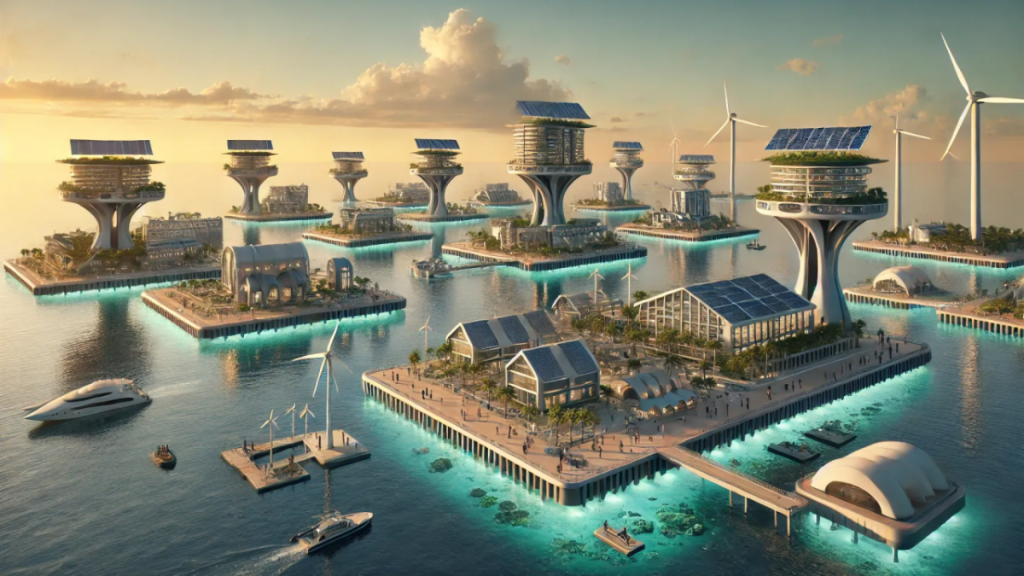As the world’s cities continue to expand, coastal development is facing new challenges—and opportunities. Rising sea levels, urban congestion, and growing demand for sustainable housing are forcing architects, engineers, and policymakers to rethink what it means to live by the water.
In response, a new wave of smart coastal communities is emerging across the globe. These developments combine advanced technologies, integrated infrastructure, and climate-aware planning to create livable, resilient spaces in areas once considered difficult—or even risky—for long-term habitation.
Nowhere is this trend more visible than in Dubai, where a series of artificial islands is being developed with a focus on digital connectivity and future-proof infrastructure. One of the first residential projects announced within this initiative is Bay Grove Residences Nakheel, which reflects a broader shift toward smart, strategically designed island living.
Another example is Zephyra Dubai Islands, one of several developments designed to support seamless integration between housing, mobility, and community services—all underpinned by real-time data and smart systems.
Why Coastal Cities Are Turning to Smart Infrastructure
The push for smarter urban design isn’t new, but its application in coastal environments is gaining urgency. Coastal cities face specific challenges, including:
- Vulnerability to flooding and erosion
- Higher costs for utility and transport infrastructure
- Environmental sensitivity and regulation
- Strong competition for developable land
By embedding technology directly into the planning and construction phases, developers can address these issues more effectively. Smart systems allow for predictive maintenance, adaptive energy consumption, and automated response to environmental changes—critical advantages when building on or near water.
Core Features of Smart Coastal Developments
While each smart coastal community is unique in form and function, several core technologies and design principles are becoming standard:
1. IoT-Enabled Infrastructure
Sensors embedded throughout public and private spaces monitor everything from traffic flow to air quality, providing actionable data for both residents and city operators.
2. District Cooling and Energy Management
Smart grids and centralized cooling systems help reduce carbon emissions and manage peak energy demand, which is especially valuable in hot, coastal climates.
3. Mobility Integration
From electric water taxis to autonomous shuttles, smart coastal zones often experiment with innovative transit solutions designed to reduce reliance on personal cars.
4. Water and Waste Management
Efficient desalination, greywater recycling, and AI-optimized waste collection help preserve marine ecosystems and reduce strain on urban infrastructure.
5. Climate-Responsive Architecture
Buildings are designed to adapt to solar exposure, wind flow, and rising temperatures—sometimes integrating AI-driven systems that automate shading, ventilation, and lighting.
The Advantages of Building Smart from the Start
One of the greatest benefits of artificial islands and new coastal districts is the opportunity to implement smart systems from day one. Unlike legacy urban areas, which must retrofit infrastructure around existing buildings, these developments allow for full digital integration from the ground up.
This enables:
- Better land-use efficiency
- Fewer infrastructure redundancies
- Optimized traffic and transport networks
- Easier implementation of renewable energy sources
It also gives urban planners the chance to model and simulate environmental impact in advance—an essential consideration for coastal zones that are increasingly vulnerable to climate-related risks.
Case Study Trends: Global Cities Going Smart by the Sea
Dubai isn’t the only city exploring high-tech coastal development. Similar projects are underway or in planning stages around the world:
- Singapore has invested in smart coastal districts like Marina South, which use AI for traffic control, waste management, and flood prevention.
- South Korea’s Songdo International Business District, built on reclaimed land, serves as a global reference point for smart-city integration.
- The Netherlands, long experienced in water management, is testing sensor-equipped dikes and levees in urban expansion zones near the coast.
- Saudi Arabia’s Neom project, while inland, includes plans for The Line—a smart, linear city that shares many of the same integrated infrastructure strategies.
These cities are not only testing the limits of urban design but are also contributing data, frameworks, and insights that inform future projects elsewhere.
The Sustainability Imperative
Smart coastal communities are not only about convenience or digital luxury—they also play a critical role in achieving sustainability targets. By combining renewable energy systems, efficient land use, and tech-driven environmental monitoring, they help mitigate the ecological footprint of urban expansion.
In practice, this can mean:
- Solar arrays powering public amenities
- Sea walls embedded with tidal sensors
- Green roofs monitored for biodiversity health
- AI-regulated irrigation systems for public landscaping
These solutions are particularly relevant as more people seek homes that align with environmental values, without sacrificing access to modern services and infrastructure.
Challenges and Considerations
Despite their promise, smart coastal communities are not without risks and trade-offs:
- High upfront costs for infrastructure and technology implementation
- Complex maintenance requirements for sensor networks and integrated systems
- Data privacy concerns in digitally dense environments
- Potential for exclusivity, making such communities accessible only to high-income residents
Addressing these issues will require careful policy development, strong governance, and collaboration between public and private sectors.
The emergence of smart coastal communities signals a turning point in how cities plan for growth, sustainability, and climate adaptation. While still early in execution, projects like Dubai Islands suggest that artificial geography doesn’t have to mean artificial living.
When designed thoughtfully and executed with long-term resilience in mind, these communities can offer real solutions to some of the most pressing challenges of the urban century.

